Authentic Madras Filter Coffee with a rich aroma and frothy top-learn to brew this flavorful South Indian classic at home! Made with a traditional coffee filter and blended with creamy, frothy milk, this Kaapi strikes the perfect balance of boldness and smoothness. Whether you're a coffee enthusiast or trying it for the first time, this Indian coffee recipe makes it easy to master. Ready in just 30 minutes! Use plant-based milk for a delicious vegan twist!
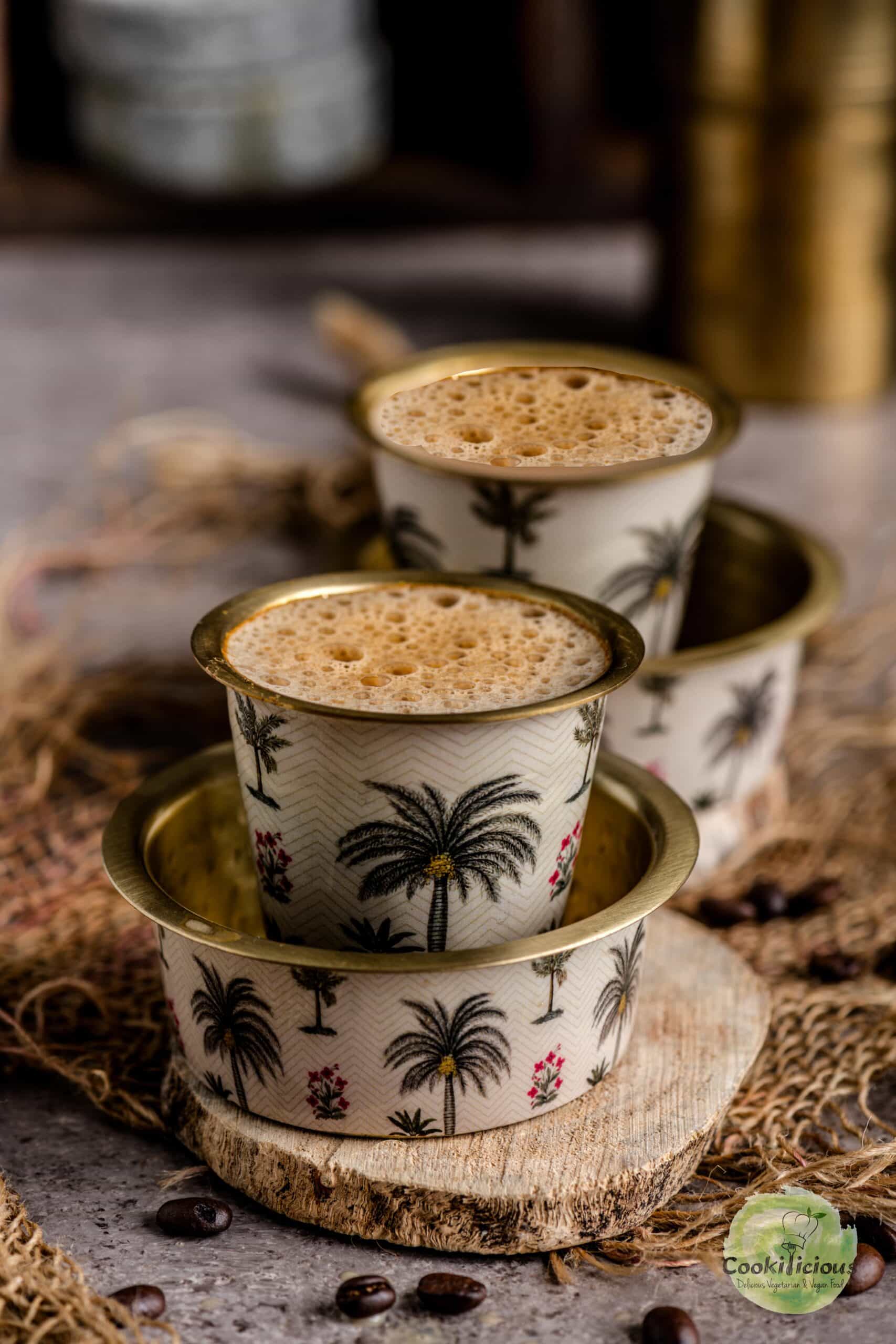
Jump to:
- What Is Madras Filter Coffee
- What Is Chicory
- Why Is Authentic South Indian Filter Kaapi Special
- Coffee And Milk Ratio
- Indian Coffee Maker
- Why Make It
- Ingredients needed 🧾
- How to make it 🔪
- Serving suggestions 🍽
- What To Serve With South Indian-Style Coffee
- How To Make A Frothy Filter Coffee
- How To Drink Madras Kaapi
- Top recipe tips 💭
- FAQs 📖
- More Drink Recipes
- Recipe 📖
What Is Madras Filter Coffee
Indian filter coffee is known for its deep aroma and bold, well-balanced flavor. It is made by blending hot milk and sugar with a strong decoction, brewed using finely ground coffee powder and chicory in a traditional filter kaapi maker. The fresh decoction enhances its signature fragrance, while chicory adds a subtle bitterness that enriches the taste. Topped with its signature frothy layer, this South Indian beverage is often described as "hot, strong, sweet, and irresistibly creamy. The technique of making it is similar to Drip Coffee.
Filter Kaapi and Chai are two of India's most beloved beverages, each holding a special place in daily life. While kaapi is enjoyed worldwide, South Indian filter kaapi stands apart with its unique brewing method and rich, aromatic taste. Particularly popular in Madras (now Chennai), this iconic drink is deeply rooted in Brahmin communities, earning it the name Madras (now Chennai) Filter Kaapi.
While many experimented with Dalgona Coffee during the lockdown, Madras filter coffee has been cherished for generations! If you love experimenting with coffee, try these recipes - Vegan Mocha Latte, and Iced Pumpkin Spiced Latte.
What Is Chicory
Scientifically known as Cichorium intybus, chicory is a woody, herbaceous plant with vibrant blue flowers, belonging to the dandelion family. Its roots are dried, roasted, and ground to be used as a coffee additive or a caffeine-free substitute. They both have naturally complementary flavors, enhancing and deepening each other's richness. Since chicory is caffeine-free, it's a great choice for those looking to cut down on caffeine while still enjoying a bold cup of brew.
Pure coffee grounds can be intensely bitter, so chicory is often blended with it during grinding. It helps mellow the bitterness, adds body to the brew, and enhances the overall taste of the beverage. When purchasing ground coffee, check the chicory content on the label-10% to 15% chicory is ideal for a balanced flavor, though some brands offer blends with 20% to 30% chicory. For those who prefer pure brew, 100% coffee without chicory is also available. You can even buy chicory separately and customize your blend to suit your taste!
Why Is Authentic South Indian Filter Kaapi Special
South Indian filter kaapi is known for its smooth, well-balanced texture and takes just 15-20 minutes to prepare. Unlike espresso, it is milder yet deeply flavorful, offering a perfect harmony of strength and aroma without overwhelming intensity. Experts believe its uniqueness lies in the traditional extraction process, affordability, and the intense heat used in brewing, all of which contribute to its distinctive taste.
Recently, this South Indian beverage made headlines after being ranked the world's second-best coffee, setting it apart from its global varieties. As KR says, "Kaapi made the old traditional way tastes far better than the ones brewed in modern electric machines!" This beloved drink is a staple in South Indian homes, hotels, restaurants, and street-side stalls. Try it for yourself and experience why it's considered one of the best!
Coffee And Milk Ratio
The decoction-to-milk ratio in South Indian filter coffee is entirely based on personal preference. A common proportion is ¼ cup of decoction to ¾ cup of milk, creating a thick and creamy Kaapi. For a stronger brew, you can opt for a 1:1 ratio, using equal parts decoction and milk. Feel free to experiment and find the perfect balance that suits your taste!
Unlike other brewing methods, South Indian filter kaapi doesn't have rigid rules for milk or water temperature, ratio, or pouring technique-it's all about what you enjoy the most.
The first decoction is the strongest and most flavorful, earning it the name Degree Coffee in South India, particularly in Kumbakonam, Chennai, and Thanjavur. This rich brew is also known as Meter Coffee due to its signature serving style, where it is skillfully poured back and forth between two utensils from a height. Traditionally, servers would stretch the pour to nearly a meter, enhancing the froth and aerating the brew, giving it its distinctive name and smooth texture.
Indian Coffee Maker
The South Indian kaapi maker, also known as a Drip Filter, is a simple yet traditional brewing device. It consists of two cylindrical compartments-one for holding the grounds and another for collecting the brewed decoction-similar to a Vietnamese filter. A small pressing disc, often called an umbrella due to its shape, helps compact the grounds, while tiny holes at the base of the top compartment allow the decoction to slowly percolate into the bottom chamber. Typically made of brass or stainless steel, this non-electric filter has been a staple in Indian households for generations.
This South Indian beverage is also served in a distinctive style. Unlike tea, which is traditionally served in a cup and saucer, filter kaapi is poured into a davara (dabara or dabra)-a wide metal saucer-and a tumbler (glass), both commonly made of brass or stainless steel. This unique serving method enhances the experience, allowing the drink to be cooled and frothed by repeatedly pouring it between the two vessels.
Oddly enough, I'm neither a coffee nor a tea drinker-I prefer Cold Coffee or a Frappuccino. But growing up, my mornings were filled with the rich, tantalizing aroma of freshly brewed filter kaapi, accompanied by Vishnu Sahasranamam playing at full blast. This was the quintessential start to the day in my Tamil Brahmin household! My parents simply couldn't-and wouldn't-begin their morning without their steaming cup of Kaapi. Any true coffee connoisseur will tell you that nothing compares to the depth of flavor and experience of filter kaapi-instant coffee doesn't even come close!
Why Make It
- No electric coffee machine needed - Brew it authentically, the traditional way, no fancy equipment required!
- Enjoy an authentic experience - Savor the rich aroma and bold flavor of South Indian filter kaapi, just like it's meant to be.
- Made with just 4 basic ingredients - ground coffee, water, milk and sugar -that's all you need!
- Ready in just 30 minutes - Simple and easy to make, perfect for a quick yet flavorful brew fix.
- Rich, bold, and frothy - The signature decoction brewing method enhances the flavor, creating a strong, aromatic kaapi with a creamy froth.
- Customizable strength - Adjust the coffee-to-milk ratio to suit your preference, from mild to strong.
- Better than Espresso - Unlike espresso, filter kaapi has a smoother taste and is gentler on the stomach.
- Budget-friendly - No expensive pods or machines-just high-quality coffee powder and a traditional filter.
- Vegan-friendly option - Easily swap dairy milk with plant-based alternatives for a delicious vegan version.
- Perfect for sharing - Brew a batch for family or guests and enjoy the experience of pouring and frothing like a pro!
Ingredients needed 🧾
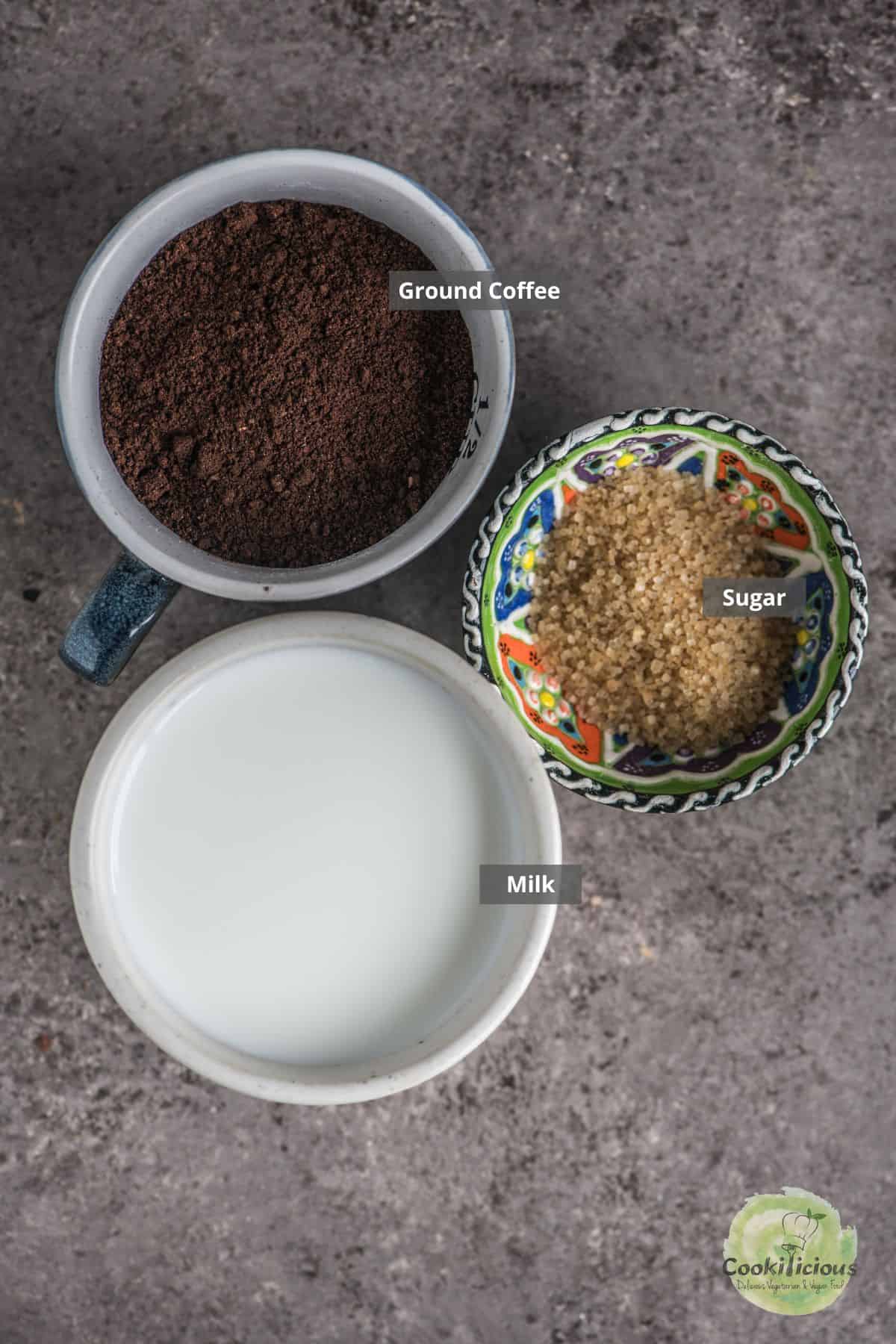
For the best Kaapi, use high-quality store-bought ground coffee from regions like Coorg or Kodaikanal, Tamil Nadu, specifically made for South Indian filter kaapi. The two most popular coffee bean varieties are Arabica and Robusta, and you can choose with or without chicory based on your preference. When purchasing from a store, always check the manufacturing date to ensure freshness. If its stale, it won't yield the best results.
If making your own blend, roast and grind a coffee-chicory mixture in a 90:10 ratio for an authentic taste. The powder should be medium-fine to allow proper extraction.
For the best results, use full-fat whole milk, as it ensures a creamy and frothy texture. In India, cow's milk or buffalo's milk is traditionally used. In the US, 2% or 3.25% fat milk is already pasteurized and doesn't require boiling, but heating it helps replicate the taste of Indian-style Kaapi. Skip milk to make it black.
When it comes to sweeteners, you can use brown sugar, white sugar, cane sugar, jaggery powder, honey, or sugar-free alternatives-or simply skip the sugar altogether. Experiment with different options to find what best suits your taste.
A South Indian coffee filter is essential for brewing authentic Madras Filter Coffee. If you're serious about making Kaapi daily, invest in one-it's easily available at Indian grocery stores or on Amazon. If possible, get one from India. They come in different sizes (S, M, L), so choose according to your family's needs.
For a complete South Indian filter kaapi experience, consider getting a steel or metal tumbler and davara (dabra) set for serving. And if you're passionate about kaapi and want to grind your beans at home, investing in a good coffee grinder is highly recommended!
How to make it 🔪
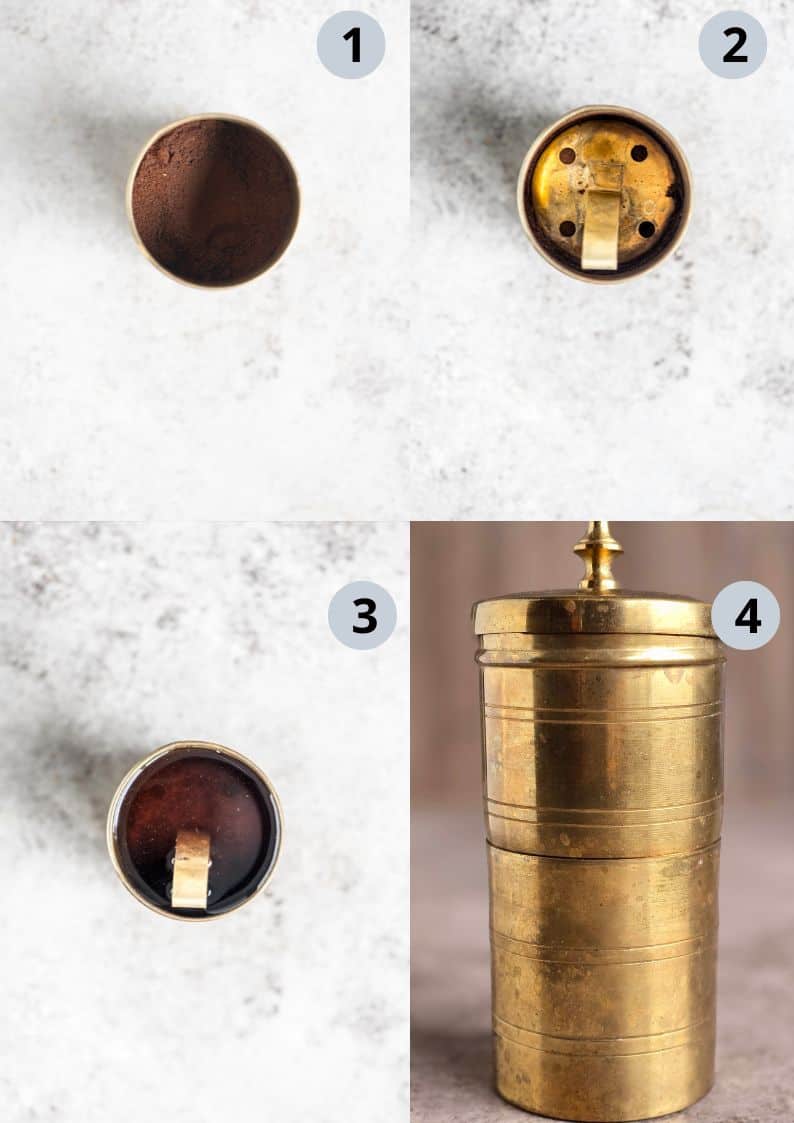
Want to save this recipe?
To Make Madras Coffee Decoction
- Start by preparing your South Indian coffee filter. Place the top compartment (the one with tiny holes) over the lower container and check that the holes are not blocked-light should pass through them.
- Next, add heaped ground coffee into the top compartment. The strength of your coffee depends on the amount of powder used here: 4 tablespoons per cup for a bold and robust brew. 3 tablespoons per cup for a balanced, medium-strength. 2 tablespoons per cup for a milder, lighter brew.
- Spread the grounds evenly using a spoon or your fingers, then place the pressing disc (umbrella) on top. Press gently to pack the grounds, but avoid pressing too hard.
- Carefully pour boiling water into the top compartment, filling it to the brim. Close the filter with its lid and let the decoction percolate slowly into the lower container. Do not disturb the process-it typically takes 15-20 minutes, though for larger filters, it may take longer. You can also leave it on the counter overnight for a richer extraction. I use an Electric Kettle to boil the water.
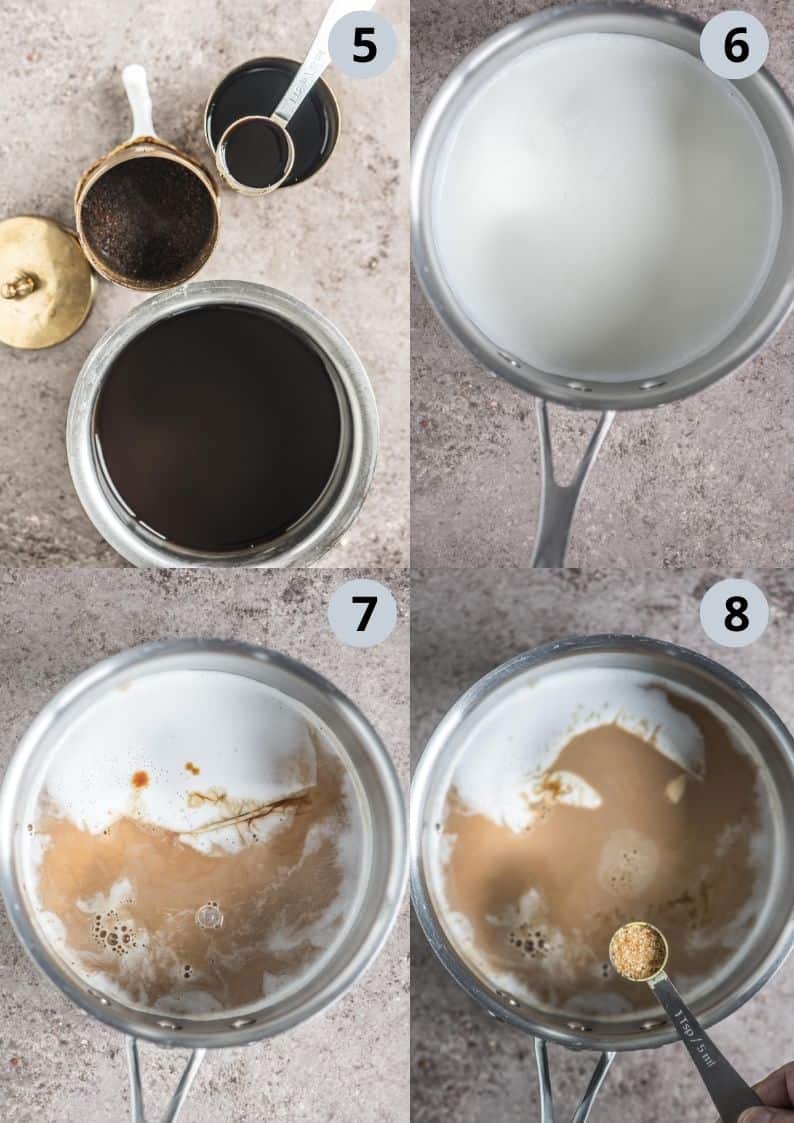
To Prepare South Indian Filter Coffee
- Once the decoction has fully percolated into the lower chamber, open the filter and check. Be careful it will be hot. The thick, aromatic decoction is now ready to use. Keep it covered to preserve its strength. The leftover grounds in the top compartment can be reused for a second round of decoction, though it will be milder. You can either discard it or use it again.
- To prepare the South Indian-style coffee, start by adding two teaspoons of water to a saucepan before pouring in the milk. This prevents the milk from scorching at the bottom, which can sometimes give the kaapi a burnt taste. It also makes cleaning the pan easier. Bring the milk to a boil.
- Next, add 3-4 tablespoons of decoction to the boiling milk, adjusting the quantity based on how strong or light you prefer your kaapi. Any leftover decoction can be stored for later use. Alternatively, you can first pour the decoction into a tumbler and then top it with boiling milk.
- Stir in sugar to taste, then remove the pan from the heat. Avoid boiling the milk after adding the decoction, as this can alter its rich flavor. Your perfectly brewed hot South Indian filter coffee is now ready to enjoy!
While the traditional method is the best way to enjoy authentic Madras Filter Coffee, here's a quick alternative: Simply add milk and decoction to your mug, then heat it in the microwave for 60 seconds (or more), depending on your preferred temperature. Stir in sugar, mix well, and enjoy your instant cup of Kaapi!
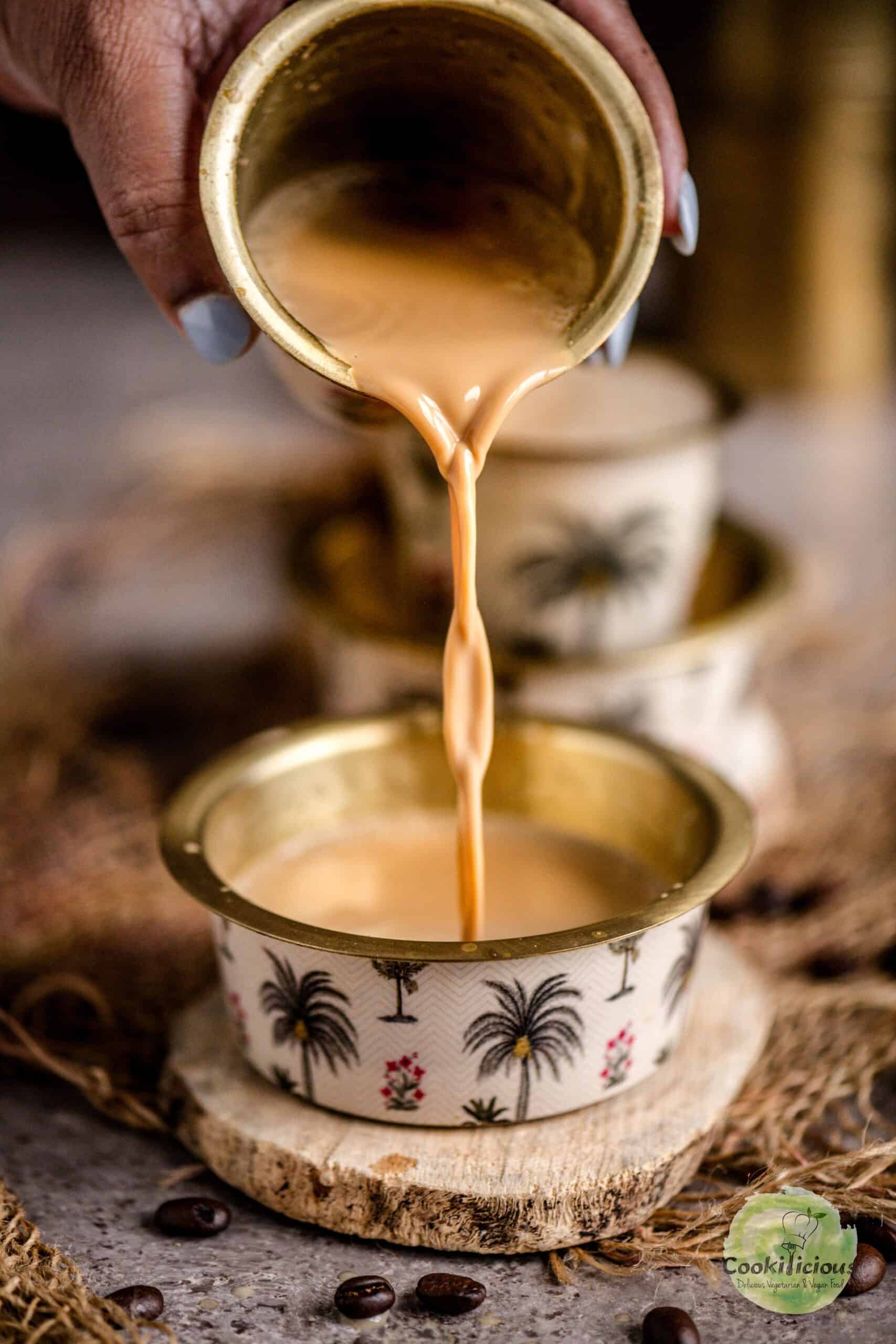
Serving suggestions 🍽
For South Indians, the day often begins with a steaming cup of piping hot filter kaapi setting the perfect tone for the morning. It is also a beloved ritual in the evening, especially after waking up from an afternoon nap. More than just a personal indulgence, Filter Kaapi is an essential part of hospitality, served to guests, at gatherings, and during special occasions like weddings, birthdays, parties, anniversaries, and baby showers.
This aromatic Madras Kaapi is also a staple during festive celebrations such as Diwali, Pongal, Navratri, Ganesh Chaturthi, Tamil New Year, and Eid, making every occasion even more special. You can have it even when observing a fast or vrat, offering comfort and warmth without breaking the tradition. Whether it's a casual get-together or a grand event, a cup of perfectly brewed Kaapi always brings people together!
What To Serve With South Indian-Style Coffee
Hot savory snacks like Ammini Kozhukattai, Medu Vada, Dal Vada, Idli, Dosa, Adai, Mysore Masala Dosa, Sundal, Paruppu Sevai, Kuzhi Paniyaram, Lemon Rice, Ven Pongal, Coconut Rice, Masala Idli, Puli Aval, Upma, Pesarattu, Uttapam, or Mushroom Kalaan can be served with it.
This Indian hot beverage also pairs well with crispy dry snacks like Thattai, Sev, Boondi, Chivda, Moong Dal Chatpata, Banana Chips, Puff Pastry Samosa, Palak Paneer Puffs, Matar Kachori Pinwheels, Cilantro Mathri, or Masala Almonds. You can also serve it with biscuits, Biscotti, cookies.
How To Make A Frothy Filter Coffee
The traditional method of making a frothy Filter Kaapi involves pouring the hot kaapi from the tumbler to the davara (or saucer) from a height, then pouring it back into the tumbler. Repeat this a couple of times to aerate the decoction, which creates a rich, frothy top. This technique also cools the drink slightly, making it more drinkable, while enhancing the aroma that fills the air, adding to the sensory experience. The result is a smooth, creamy, and aromatic cup of Chennai Filter Kaapi every time.
If you prefer a quicker method, you can always use a frother to achieve a frothy texture and serve it in a mug instead!
How To Drink Madras Kaapi
To enjoy Madras Filter Coffee the traditional way, pour the kaapi in the tumbler and place it on the davara. Always hold the rim of the tumbler to avoid burning your hands, as it will be very hot. After a couple of pours between the tumbler and davara, it will come to a drinkable temperature, and you can sip your Filter Kaapi, savoring its rich, aromatic flavor.
Alternatively, you can opt for a simpler presentation by serving it in a regular mug if you prefer!
Top recipe tips 💭
For the richest taste, ensure that milk is freshly boiled and the decoction is freshly brewed. The ratio of decoction to milk can be adjusted based on your taste preference. For an extra flavor kick, add a pinch of cardamom or cinnamon when making the decoction.
FAQs 📖
For an authentic Madras Filter Coffee experience, choose the grounds specifically meant for South Indian brewing. The most popular blends are made from Arabica and Robusta coffee beans, with or without chicory.
Some of the best South Indian coffee brands that we have tried and are available in the US include Panduranga, Narasus, Udhayam, Kalmane, and Cothas. If you have access to Indian grocery stores, you can also find these brands locally. You can also find it on Amazon or get it from India. Additionally, Café du Monde New Orleans-style ground coffee with chicory is a great alternative for those looking for a similar taste profile.
Experiment with different brands, ratios, and proportions to find the perfect combination that suits your palate! Avoid instant coffee powder, as it won't work for this traditional brewing method.
After brewing the first decoction, you can reuse the grounds to make a second batch. Simply add half the quantity of hot water to the used grounds. However, keep in mind that this second decoction will be thinner and milder, which may slightly alter the taste and thickness of your kaapi.
If you prefer a strong and robust cup, it's best to use fresh grounds each time. Otherwise, if you don't plan on making a second decoction, simply discard the residue.
To enjoy a vegan version of South Indian Filter Coffee, simply swap dairy milk with soy milk or oat milk. These plant-based options complement the coffee's bold flavors while maintaining a creamy texture.
For the best results, use plain, unsweetened varieties to keep the flavor authentic. You can also experiment with almond, cashew, or coconut milk to find the one you like best. When preparing, heat the milk but do not boil it, as plant-based milk can sometimes separate when overheated.
Enjoy your dairy-free Filter Kaapi with the same rich taste and signature frothy top!
For the best flavor, freshly brewed decoction is always ideal, but if you have leftovers, you can store it properly to extend its usability. The decoction can be left on the counter overnight, covered, so it's ready to use in the morning. If needed, it can stay at room temperature for a day, provided it remains covered to preserve its aroma. While refrigeration is an option, storing decoction in the fridge for longer duration may cause it to lose some of its rich flavor. If refrigerated, gently reheat it before use, but avoid excessive boiling as it may alter the taste.
If you have leftover prepared coffee, you can reheat and drink it, though nothing beats the taste of freshly made Filter Kaapi. Instead of wasting excess decoction, get creative with it! You can use it to make Coffee Cheesecake, similar to Chai Cheesecake, or add it to chocolate-based dessert recipes that call for espresso, like Chocolate Brownie, Brownie Milkshake, or Chikoo Milkshake. It also makes a great base for a refreshing Cold Coffee.
To keep your ground coffee fresh, store it in an airtight, dark canister at room temperature or in the fridge. This helps preserve its aroma and flavor.
If you don't have a South Indian coffee filter, there are several alternative ways to brew Madras Filter Kaapi. The key is to use finely powdered coffee without chicory, as it works best for these methods.
1. Using a Sieve or Muslin Cloth
One of the simplest ways to make it without a filter is by using a fine sieve. Start by placing coarsely ground coffee in a bowl, using about 1-2 tablespoons per cup. Bring water to a boil, let it cool slightly, and pour it over the grounds. Let it steep for 10-15 minutes to allow the flavors to develop. Then, strain the decoction through a fine sieve or muslin cloth into another container, and use it as needed.
2. Restaurant-Style Cheesecloth Method
In restaurants, where large batches of decoction are needed, kaapi is often brewed without a filter. Instead, they pass the coffee through a cheesecloth, allowing the decoction to drip into a large vessel. This method can be easily replicated at home by tying ground coffee in a clean cheesecloth, pouring hot water over it, and letting the decoction collect in a container below.
3. Using a French Press
A French Press can also be used as an alternative brewing method. First, pour a little boiling water into the French Press and discard it-this preheats the container. Next, add 1 to 1.5 teaspoons of coffee powder, pour in boiling water, and stir gently to agitate the grounds. Let it steep for about 3 minutes, then slowly press the plunger down. Use this as decoction.
4. Using a Paper Filter or Espresso Machine
Another option is to use a paper filter (such as a pour-over method) or even an espresso machine to brew the decoction.
Disclaimer: While these methods won't perfectly replicate the taste of Madras Filter Coffee, they can work as alternatives when a traditional filter isn't available. I haven't personally tried these methods, but they are commonly suggested alternatives. Feel free to experiment and find what works best for you!
Yes. Since the decoction is thick, you'll need to dilute it with hot water to suit your taste. To make it without milk, simply pour the decoction into a cup, add hot water, and adjust the decoction-to-water ratio based on your preference. You can also choose to add or skip sugar as desired.
For the best black coffee experience, it's recommended to use coffee without chicory, as chicory adds a slight bitterness and thickness, which may not be ideal when making it black.
The Madras Filter Coffee machine is essential for making authentic South Indian Kaapi. Depending on the size of your filter, add the right amount of ground coffee and water. I have used a small filter in this recipe. Always use a clean South Indian filter for the best results. After use, to clean it, soak the filter in boiling water and use a sharp needle to clear any blockages in the filter holes, ensuring they remain unobstructed for smooth percolation.
If you have a large filter, you can brew for 4 people, while a smaller filter is ideal for brewing for 2 people.
More Drink Recipes
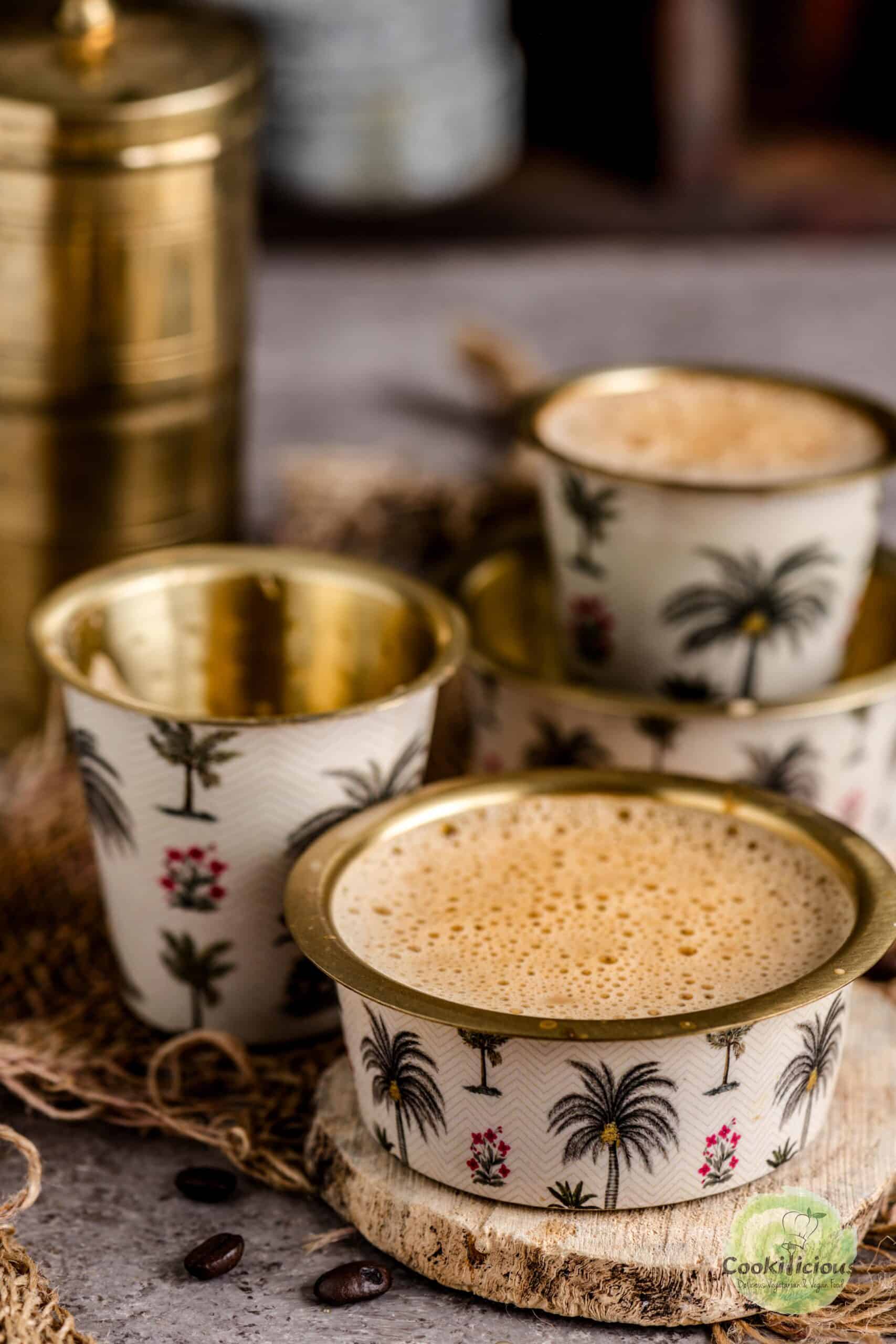
⭐️ Subscribe to the Cookilicious Newsletter and receive new recipes straight to your inbox! You'll receive my FREE Vegan Beginner's guide as a gift. Ready to elevate your cooking game? Purchase my Cookbook - The Essential Vegan Indian Cookbook today!
Recipe 📖
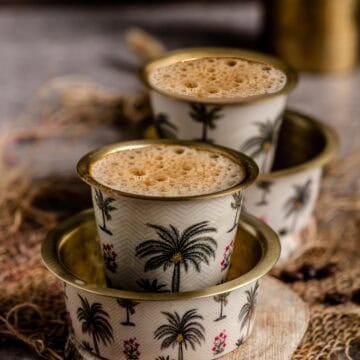
Madras Filter Coffee | Indian Coffee Recipe
Ingredients
To Make Coffee Decoction
- 4 tablespoon ground coffee
- ½ cup boiling water
To Make Filter Coffee
- 1 cup milk
- 3-4 tablespoon coffee decoction
- 2 teaspoon sugar
Instructions
To Make Madras Coffee Decoction
- Start by preparing your South Indian coffee filter. Place the top compartment (the one with tiny holes) over the lower container and check that the holes are not blocked-light should pass through them.
- Next, add heaped ground coffee into the top compartment. The strength of your coffee depends on the amount of powder used here: 4 tablespoons per cup for a bold and robust brew. 3 tablespoons per cup for a balanced, medium-strength. 2 tablespoons per cup for a milder, lighter brew.
- Spread the grounds evenly using a spoon or your fingers, then place the pressing disc (umbrella) on top. Press gently to pack the grounds, but avoid pressing too hard.
- Carefully pour boiling water into the top compartment, filling it to the brim. Close the filter with its lid and let the decoction percolate slowly into the lower container. Do not disturb the process-it typically takes 15-20 minutes, though for larger filters, it may take longer. You can also leave it on the counter overnight for a richer extraction. I use an Electric Kettle to boil the water.
To Prepare South Indian Filter Coffee
- Once the decoction has fully percolated into the lower chamber, open the filter and check. Be careful it will be hot. The thick, aromatic decoction is now ready to use. Keep it covered to preserve its strength. The leftover grounds in the top compartment can be reused for a second round of decoction, though it will be milder. You can either discard it or use it again.
- To prepare the South Indian-style coffee, start by adding two teaspoons of water to a saucepan before pouring in the milk. This prevents the milk from scorching at the bottom, which can sometimes give the kaapi a burnt taste. It also makes cleaning the pan easier. Bring the milk to a boil.
- Next, add 3-4 tablespoons of decoction to the boiling milk, adjusting the quantity based on how strong or light you prefer your kaapi. Any leftover decoction can be stored for later use. Alternatively, you can first pour the decoction into a tumbler and then top it with boiling milk.
- Stir in sugar to taste, then remove the pan from the heat. Avoid boiling the milk after adding the decoction, as this can alter its rich flavor. Your perfectly brewed hot South Indian filter coffee is now ready to enjoy!

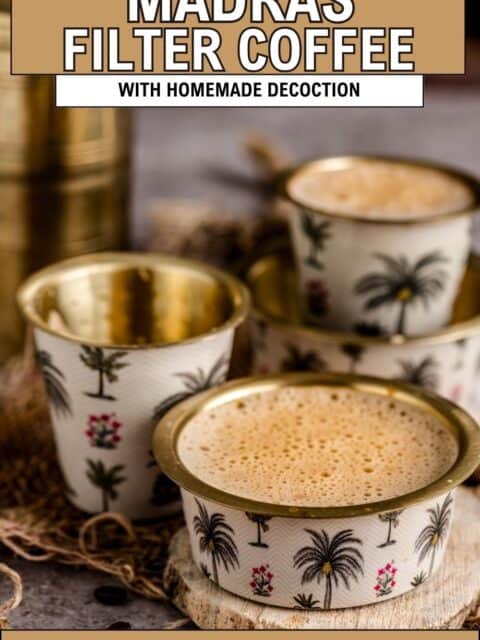
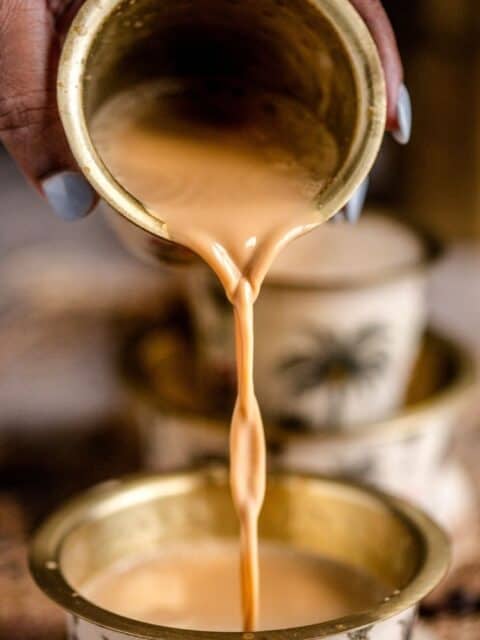
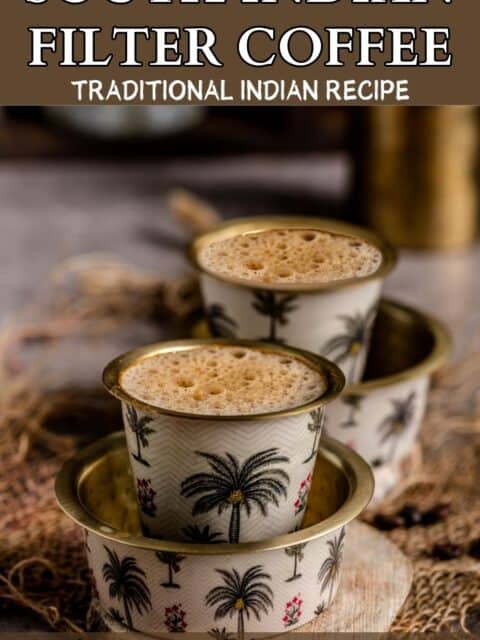

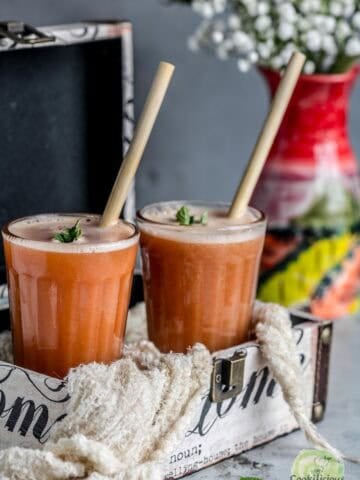

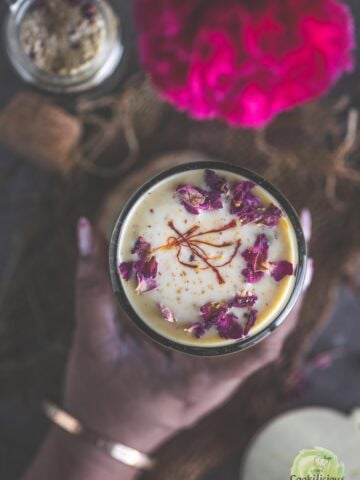
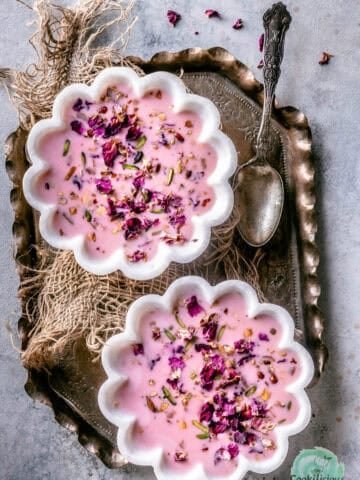
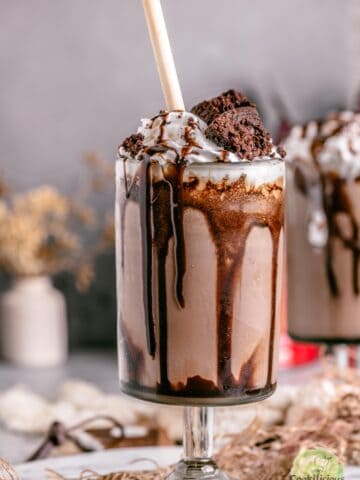
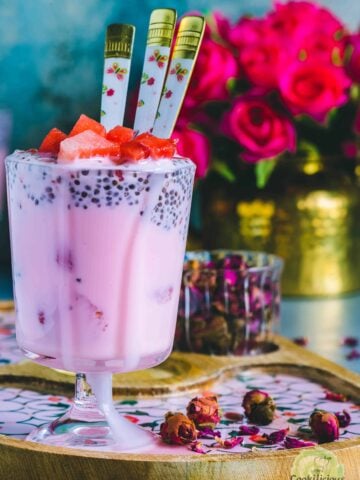

Leave a Reply